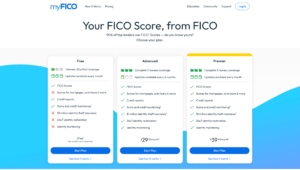Did you know paying less than the minimum amount due on a credit card account can lead to a charge-off?
When you sign a credit card agreement, whether physically or electronically you agree to make the minimum monthly payments. The agreement constitutes a legal contract.
What happens when you make a payment that is less than the minimum due?
When you fail to make payments on a timely basis, you essentially breach the contract. That’s why making less than the minimum payment can lead to a charge-off.
It’s equivalent to sending no payment at all.
You may not receive a warning or collection calls from the credit card company but your account will generally be charged-off in the same 180-day time period as if no payments were received.
Paying only the minimum payment can represent its own set of financial challenges; but, anytime you make less than the minimum payment, your credit card account can be considered delinquent and a charge-off can ensue.
Unless you reach out to the credit issuer to make an official repayment plan, prior to missing payments and paying less than the minimum, they can legally charge-off your account. Removing charge-off accounts from your credit reports is extremely difficult.
Credit card issuer hardship programs
Some credit card issuers have official “hardship programs” that are temporary (3, 6, 12 months), or for the lifetime of the balance repayment.
But entering into a hardship program is like re-negotiating the terms of the agreement.
Credit card companies realize people can have temporary hardships and most have some type of credit card hardship program to help consumers. But they typically don’t publicize this option.
How credit card hardship programs work?
A credit card hardship program may include:
- Lowering the interest rate.
- Lowering the minimum payment or reducing fees and penalties.
- Credit card hardship programs can be short-term (up to 12 months) or permanent (until the balance is paid).
The biggest problem with credit card hardship programs is that credit card companies don’t readily offer them to struggling account holders.
So don’t be shocked if you haven’t heard about it.
It’s so secret that credit card companies may even call their hardship programs by different names. If you’ve been speaking to a general customer service representative, they may not have offered this type of program as an option because they may not know the company has a hardship program.
Plus, credit card companies aren’t required to offer hardship programs, it’s in their sole discretion to do so.
You probably have to ask about a hardship program
Call, email, or write the credit card issuer to inquire about a hardship program. Be prepared to answer questions about your financial status, employment, household income and expenses.
What happens to your credit score with a credit card hardship program?
More than likely charging privileges will be suspended with a hardship program. Some credit card issuers reinstate the card once the program is completed.
How the credit card hardship program appears on your credit report depends on the credit card issuer. Some credit card issuers will not report negative information as long as the customer maintains a good standing in the program.
In some instances, the negative information will be removed if you complete the program.
If you’re able to get into a credit card hardship program, make sure you ask all the pertinent credit score (i.e. will my payments be reported “Paid as Agreed” and “Never Late”) questions before entering into an agreement.






















